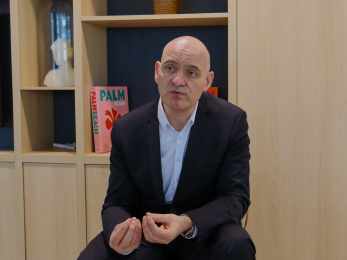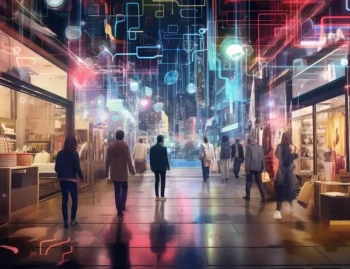Industry 5.0: how to be more resilient with IOT and Data?
With the advent of Industry 5.0, connected objects are becoming even more essential to respond to new use cases because they provide the “on-the-ground” vision that is essential to achieving the objectives of this industry: connected, resilient, sustainable and human-centered.
Industry 5.0: a new era for industry
In January 2021 the European Commission laid the foundation for a new era for industry: Industry 5.0.
Complementing the concept of Industry 4.0 which focused on technological innovation and connectivity, Industry 5.0 adds consideration of worker well-being, sustainability and resilience.
As such Industry 5.0 complements and extends Industry 4.0. It focuses on aspects that will be decisive, not only economic or technological, for the place of industry in the future European society. These factors also have environmental, social and fundamental rights dimensions. Thus, Industry 5.0 should not be understood as a chronological continuation of or alternative to the existing Industry 4.0 paradigm, but as a natural and enriching evolution.

Breaking down the silos of connected objects
We are convinced that, even more than with Industry 4.0, Industry 5.0 will need connected objects to bring back measurements from the field to efficient data platforms capable of “mixing” data from different domains (industrial production, energy performance, work environment, etc.) to extract maximum value and learning.
Indeed, if Industry 4.0 still accepted data processing in silos, it is clear that the objectives of 5.0 require breaking down these silos to bring them together in order to respond to new cases of use through relevant data science processing (e.g.: what relationship between my industrial production and my energy consumption? What is the relationship between the quality of my production and the quality of my work environment? etc.).

Breaking down data silos to address Industry 5.0 use cases.
Data Centric IIoT platforms
To meet these new use cases, it is therefore essential to implement data platforms capable of efficiently integrating the flow of telemetry generated by the connected objects of this new industry.
Industrial IoT 5.0 or IIoT 5.0 (Internet of Things for Industry 5.0) must therefore be seen and implemented as a source of data essential to the realization of these use cases.
At JEMS, this conviction is anchored in our way of conceiving industrial data patrimonies. The IIoT flows are seen as data sources that enter the data platform and are gathered in a unique space which allows to cross them together with all the other data sources and thus to answer all the envisaged or future use cases, it is our “Data Centric” approach of the industrial data asset.
This conviction, which is the basis of our way of modeling data, guarantees the construction of a scalable data platform for IIoT that greatly reduces the technical debt.

Christophe LEDREUX – Practice Manager IoT JEMS





